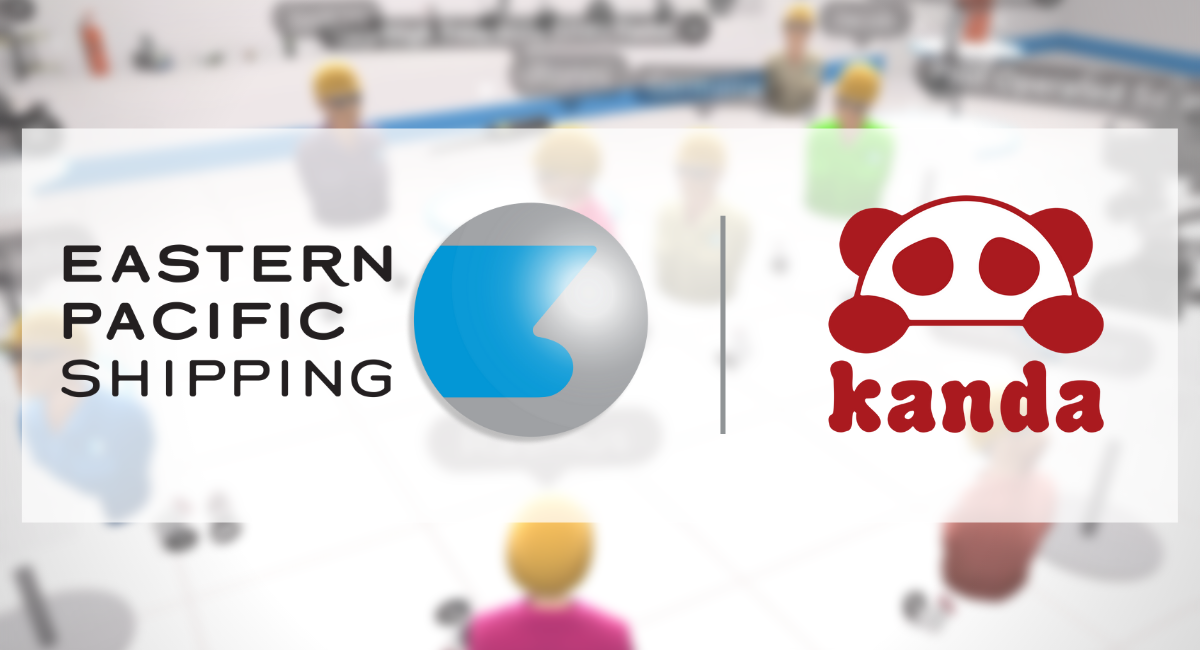EPS VR Training in the News
09 July 2021

EPS Accelerator Alumni, Kanda, Makes Headlines with Class Approved VR Training!
—
Eastern Pacific brings virtual reality to LNG bunkering training
Classification approval of interactive multi-user VR experience sees Zoom and PowerPoint put on the back-burner
9 July 2021 | Jonathan Boonzaier
Classification society Lloyd’s Register has certified the first virtual-reality (VR) course for LNG bunkering procedures, and its developers claim it does more than improve the quality of seafarer training.
It also takes out the environmental impact of that training.
Created by digital learning application developer Kanda, a Danish start-up funded by Singapore operator Eastern Pacific Shipping (EPS), the VR training also relegates Zoom forums and PowerPoint presentations to a secondary role.
The VR training involves trainees strapping on lightweight Oculus headsets and stepping onto the deck of a virtual EPS ship, complete with LNG pump and the manifold equipment required for LNG bunkering operations.
They can do this from their homes, an office or even a hotel room.
On board this virtual ship, trainees see the avatars of fellow classmates and the instructor and hear their voices — quieter for those further away and louder for those closer by — while walking around and exploring the ship environment.
Trainees collaborate with others to complete an LNG bunkering operation, learning through using virtual spanners with haptic feedback to loosen or tighten bolts in the LNG hoses, while the instructor observes closely, intervening and demonstrating as needed.
If incorrect actions are taken, the virtual pump equipment explodes dramatically, demonstrating the disastrous consequences of seafarers making serious mistakes.
Training is a vital component of safe and successful LNG bunkering operations, as it is for any operational procedure undertaken on board a vessel.
“LNG is stored at -162C and requires special skills to be handled properly,” said Gil Ofer, EPS special advisor for innovation.
“During LNG bunkering, the seafarers on board need to know how to check pressure lines, connect hoses in a specific sequence and open or close the right valves at the right time. Practising beforehand in a virtual environment builds the muscle memory that helps internalise these processes.”
Reimagining sustainable training
Seafarer training was challenging even in pre-pandemic times. Mariners traditionally undergo training by flying to Singapore, Copenhagen and elsewhere to attend multi-day courses at maritime academies.
Flight and accommodation costs make this approach an expensive undertaking, especially when large numbers of trainees are involved.
Then there are time and physical constraints. Apart from time spent in hardware simulators, most of the teaching is done in a traditional classroom and must take place within a limited number of days.
Even the physical simulations are restricted to a given number of students at a time, and only allow students to practise on equipment that often is older and smaller than what they will encounter at sea.
The benefits of the new VR approach are clear and comprehensive, Ofer said.
“Kanda’s VR training offers significant health and environmental benefits,” he explained.
“VR training means human contact is kept to a minimum, reducing the risk of transmitting viruses, like Covid-19, between seafarers across international borders. In turn, this lowers carbon emissions by removing the need for trainees to travel long distances to specialist training centres.”
By empowering instructors, students and content developers to work more flexibly, independently and remotely, VR technology creates a marketplace where instructors can deliver content over longer periods of time to students all over the world, rather than cramming it all into a few days.
EPS also described the VR training as far more realistic and exciting for a generation that has grown up infatuated with high-fidelity video games.
It reflects the most up-to-date equipment and vessel configurations and can accommodate as many students as needed.
“Because of the immersive nature of VR, students can get a feel for the true scale of the vessels they will be working on and the equipment they will be operating, making them better prepared for actual operations,” Ofer said.
Kanda’s publicity material noted that VR technology is mature enough to deliver quality content today, but it will only continue to improve, becoming ever more realistic and immersive.
EPS expects teaching methods to evolve in tandem to take advantage of the new technological opportunities that will likely include increased “gamification” to improve student engagement and the use of continuous assessment as supplements or even alternatives to traditional multiple-choice exams.


